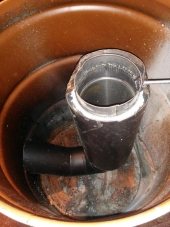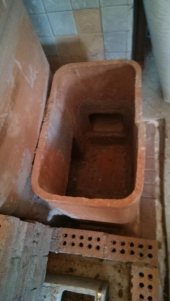









regards, Peter













It doesn't work just because it's vertical.OK, so it works because it is vertical? You need duct work for the long benches they normal make, but they are simply unnecessary when you go vertical?
"Never doubt that a small group of thoughtful, committed citizens can change the world; indeed, it's the only thing that ever has."-Margaret Mead "The only thing worse than being blind, is having sight but no vision."-Helen Keller




Roberto pokachinni wrote:Whatever you do, do not put metal pipes containing water anywhere near your burn chamber or heat riser.





God of procrastination https://www.youtube.com/watch?v=q1EoT9sedqY














While this is true, I would still consider that of all the metal in your barrel, that spot directly above your heat riser is likely to be the first metal to get overstressed and weaken and ultimately fail. Many people have a snap on or clamp on lid in this position, which is easily replaceable. Just saying. I might be wrong, but I wouldn't put water there.Presumably, it could be a few inches above the heat riser, replacing the typical barrel, as unprotected metal is their in most designs?
"Never doubt that a small group of thoughtful, committed citizens can change the world; indeed, it's the only thing that ever has."-Margaret Mead "The only thing worse than being blind, is having sight but no vision."-Helen Keller


















"Never doubt that a small group of thoughtful, committed citizens can change the world; indeed, it's the only thing that ever has."-Margaret Mead "The only thing worse than being blind, is having sight but no vision."-Helen Keller




Roberto pokachinni wrote:Is there a reason why you don't want to put the water pipes in the bell? I would think that the inside of the top of the bell would be adequate to any needs you might have. It will likely be nearly as hot as it would be after being transferred through bricks above the riser.















"Never doubt that a small group of thoughtful, committed citizens can change the world; indeed, it's the only thing that ever has."-Margaret Mead "The only thing worse than being blind, is having sight but no vision."-Helen Keller





|
We don't have time for this. We've gotta save the moon! Or check this out:
heat your home with yard waste and cardboard
https://freeheat.info
|








